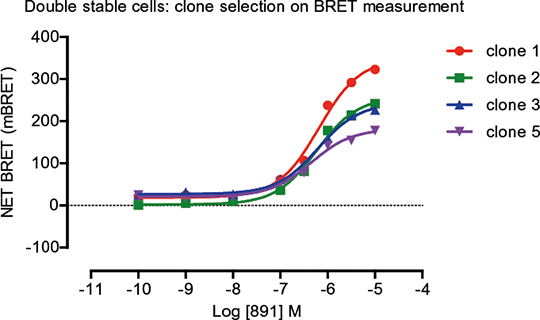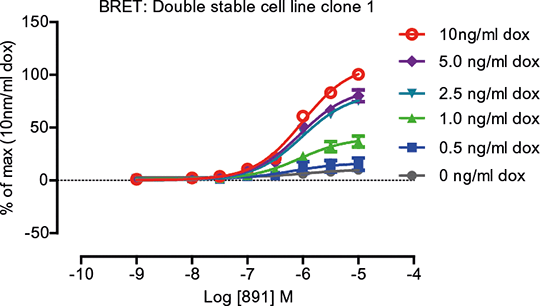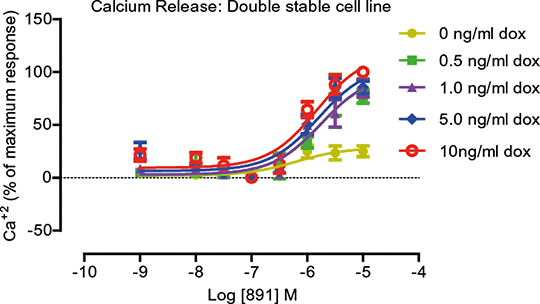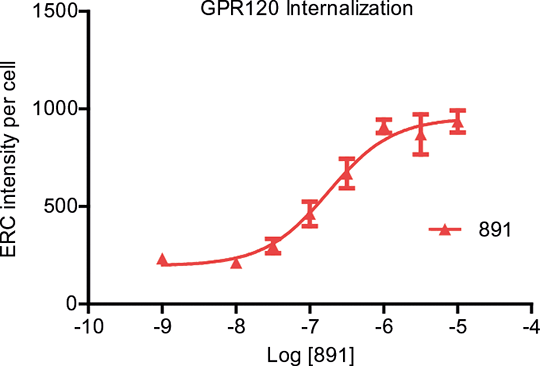Print version
Search Pub Med
A cell based model for GPR120 ligand screening. GPR120 (FFAR4), a long chain fatty acid receptor, has potential insulin-sensitizing and anti-inflammatory activity (1). The receptor is highly expressed in a range of tissues including lung, colon, adipose, brain, taste buds, skeletal muscle, heart and liver and this reflects the broad spectrum of effects of GPR120 (2). This receptor is coupled to Gq and β-arrestin 2-mediated pathways which interrelate to influence systemic metabolic function in physiological and pathophysiological conditions (3). Post deorphanisation of GPR120 a number of natural and synthetic ligands have been described, but further ligands with higher potency and selectivity would be valuable. To assist such effects we have developed a cell line constitutively expressing β-arrestin2-Renilla luciferase and able to inducibly express GPR120-eYFP. Flp-In T-REx HEK 293 cells were transfected with the cDNA of FLAG-GPR120-eYFP in pcDNA5/FRT/TO vector with pOG44 vector. These cells lack expression of FLAG-GPR120-eYFP until the cells are induced with tetracycline/doxycycline. These cells were further transfected with cDNA encoding β-arrestin-2-Renilla luciferase in pcDNA3 allowing selection via resistance to geneticin. After geneticin treatment, individual resistant foci were isolated and expanded. The relative capacity of β-arrestin-2-Renilla luciferase to interact with FLAG-GPR120-eYFP in a GPR120 agonist-dependent manner was quantified by Bioluminescence Resonance Energy Transfer (BRET) (Figure).
A GPR120 agonist, TUG-891 [3-(4-((4-fluoro-4′-methyl-[1,1′-biphenyl]-2-yl)methoxy)phenyl)propanoic acid] (4) produced recruitment of β-arrestin-2-Renilla luciferase. BRET measurements revealed this to be rapid and ligand concentration-dependent. These cells also displayed elevation of intracellular Ca2+ levels in response to GPR120 agonists. Moreover, GPR120 was also shown to be internalized upon exposure to TUG-891. In conclusion we have generated, characterized and optimized cell lines allowing inducible expression of GPR120-eYFP and constitutive expression of β-arrestin-2-Renilla luciferase. These cell lines are currently being used to screen libraries of compounds to identify novel agonists, and also antagonists, of GPR120 to assess the importance and potential therapeutic utility in targeting this receptor in conditions including metabolic disease, obesity and inflammation. References: (1) Oh DA (2014). Nat Med 8: 942-947. (2) Hirasawa A (2005). Nat Med 1: 90-94. (3) Cornall LM (2014). Drug Discov Today 5: 670-679. (4) Hudson BD (2013). Mol Pharmacol 5: 710-725.
|





